Dr Rebecca Wyten
Dr Rebecca Wyten (MED0001218326) is a Melbourne-based FRACS Specialist Plastic Surgeon who performs abdominoplasty for female patients to remove excess skin and address muscle separation (diastasis recti), often following significant weight loss.
New regulations require patients to obtain a GP or specialist medical practitioner referral before proceeding with abdominoplasty surgery.
Abdominoplasty is a surgical procedure typically undertaken after significant weight loss or pregnancy. It aims to remove excess skin and tissue from the abdomen. This surgery often includes repairing weakened or separated abdominal muscles, a condition known as diastasis recti, which can occur during pregnancy or after childbirth.
Abdominoplasty is performed under general anaesthesia. During the surgery, Dr Wyten removes excess skin, utilises liposuction to the waist, and repairs muscle separation and weakness in the abdominal area. The umbilicus (belly button) shape is also modified in appearance. This procedure may be performed with liposuction of the fat around the hips.
If an umbilical hernia is present, a collaborating Specialist General Surgeon who frequently works with Dr Wyten will repair it as part of the procedure. To ensure patient comfort, Dr Wyten performs a TAP block (nerve block) during the surgery, offering additional pain relief both during the operation and in the early recovery period.
The procedure typically lasts around 3 hours in the operating theatre, and most patients stay in the hospital overnight to monitor post-operative care and ensure recovery is progressing as expected.
It is important to have realistic expectations about what can be achieved with this surgery and to have a stable, healthy weight following weight loss. Good physical and mental health and being a non-smoker also reduce the risk of complications during and after surgery.
Under Australian regulations, all patients considering abdominoplasty must have an initial consultation with a GP or specialist medical practitioner before meeting with a surgeon. This ensures that your overall health is reviewed and that a proper referral can be made. the specialist medical practitioner first to discuss your health and then for an appropriate referral to a surgeon.
Recovery time after abdominoplasty varies, and it’s typical to experience some discomfort after the surgery. It is important to follow the instructions given to you during your recovery, including when you can resume exercise. Most patients require at least two weeks off work, with extended time off needed for physically demanding jobs. Dr Wyten will discuss recovery timelines during your initial consultation and offer detailed post-operative care instructions.
You’ll need to wear supportive compression garments for about six weeks after the procedure. These garments help minimise swelling and improve healing. Dr Wyten provides her preferred garments following surgery, but you may choose to purchase additional garments for comfort during your recovery.
As with any invasive procedure, abdominoplasty has some risks, including scarring, bleeding, and the formation of blood clots (such as deep vein thrombosis and pulmonary embolism), as well as infection. Additionally, there are inherent risks associated with general anaesthesia.
Risks specific to this surgery and those that may occur with general anaesthetic will be discussed with you by Dr Wyten during your consultation. Written information will also be provided for you to read before you proceed with surgery. Some risks associated with this procedure include:
Dr Wyten will explain all risks during your consultation and provide you with written information to help you make an informed decision.
Choosing an experienced Specialist Plastic Surgeon, such as Dr Wyten, is the safest option when considering this type of surgery. If you experience any unusual pain, swelling or bleeding after surgery, please seek help immediately.
These before and after photographs are of patients of Dr Rebecca Wyten who have given consent for the sharing of their photos.
Individual results may vary, and your outcomes may be different to these photos.
6 months since surgery
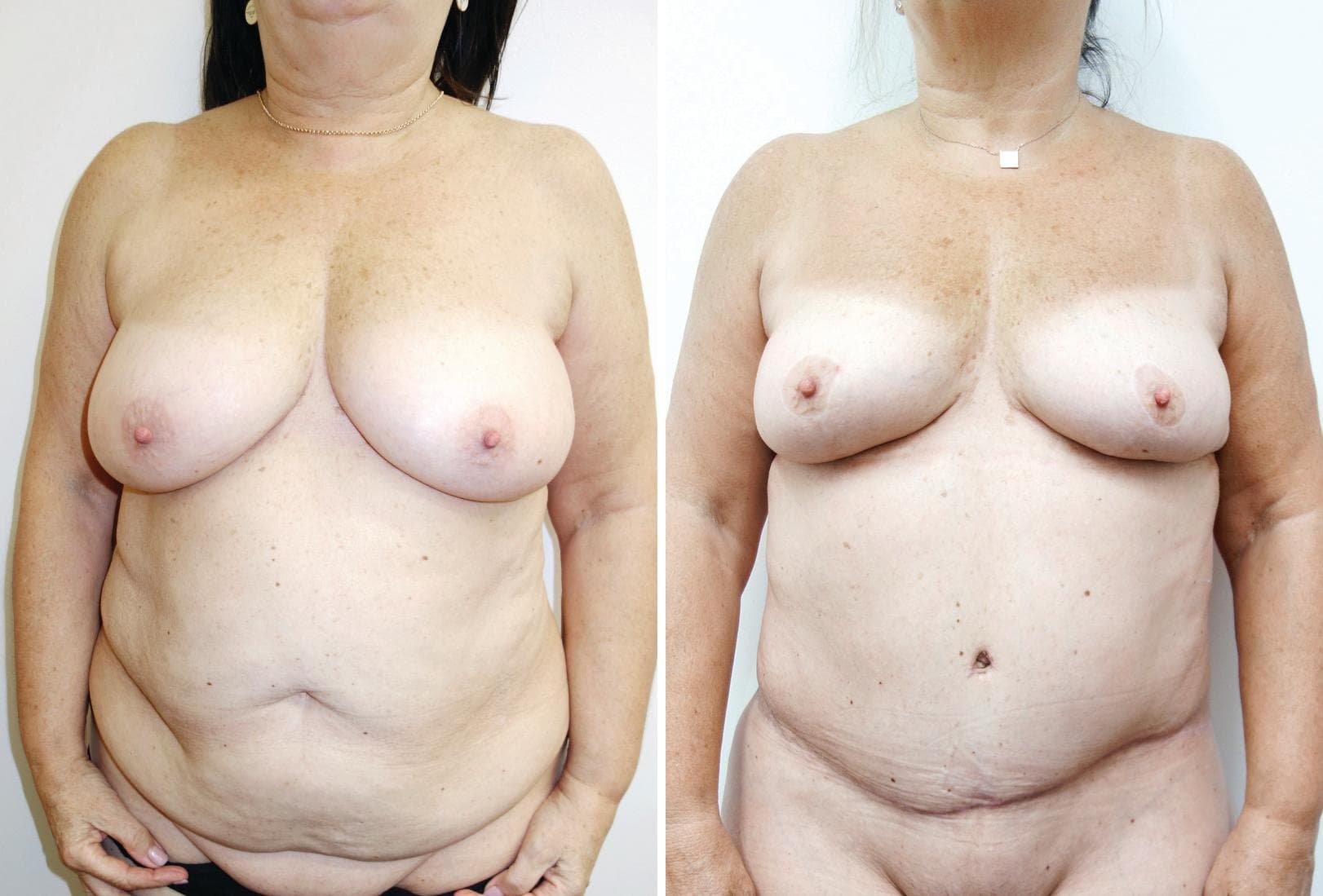
5 months after surgery
R)275cc L)300cc
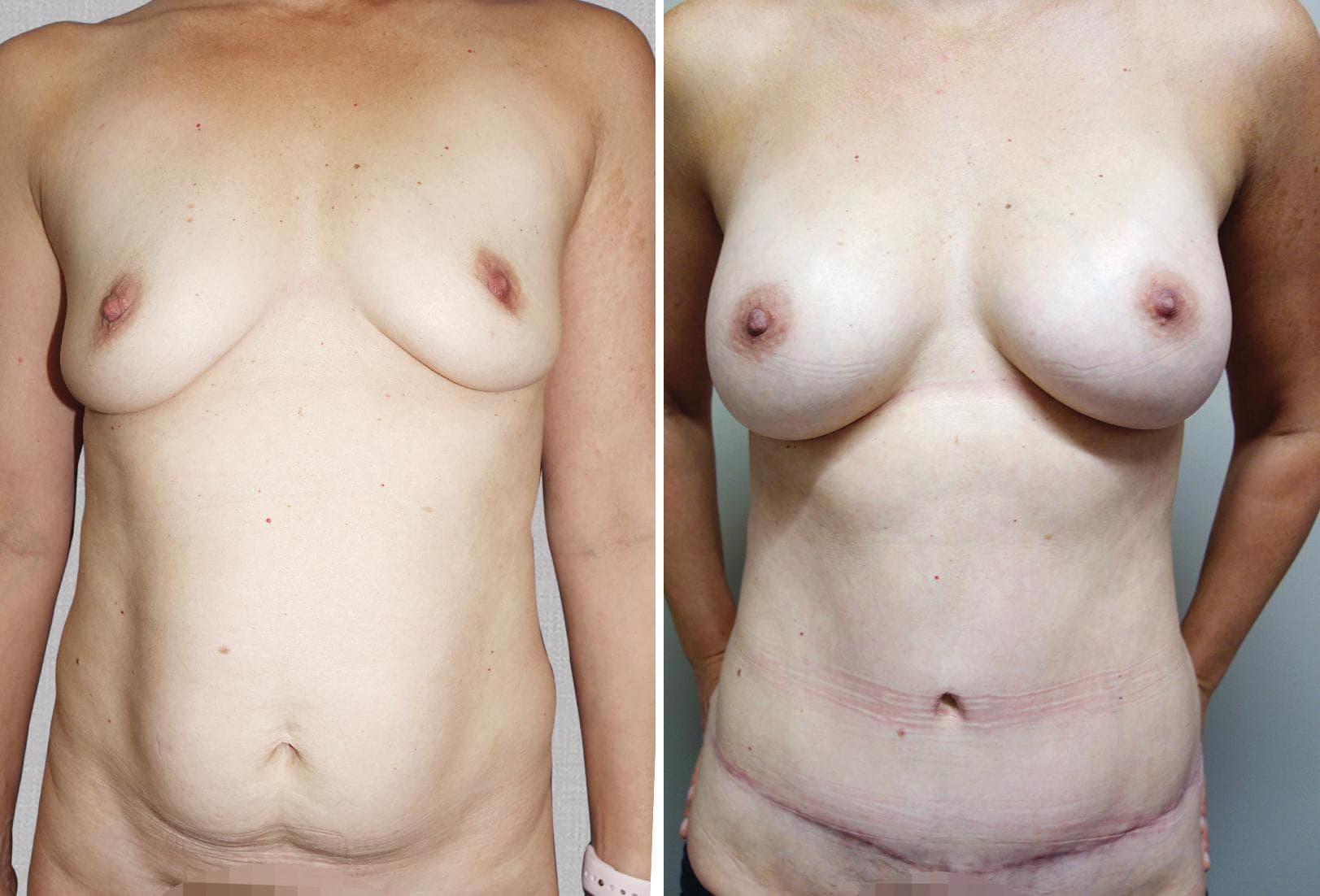
4 months since surgery
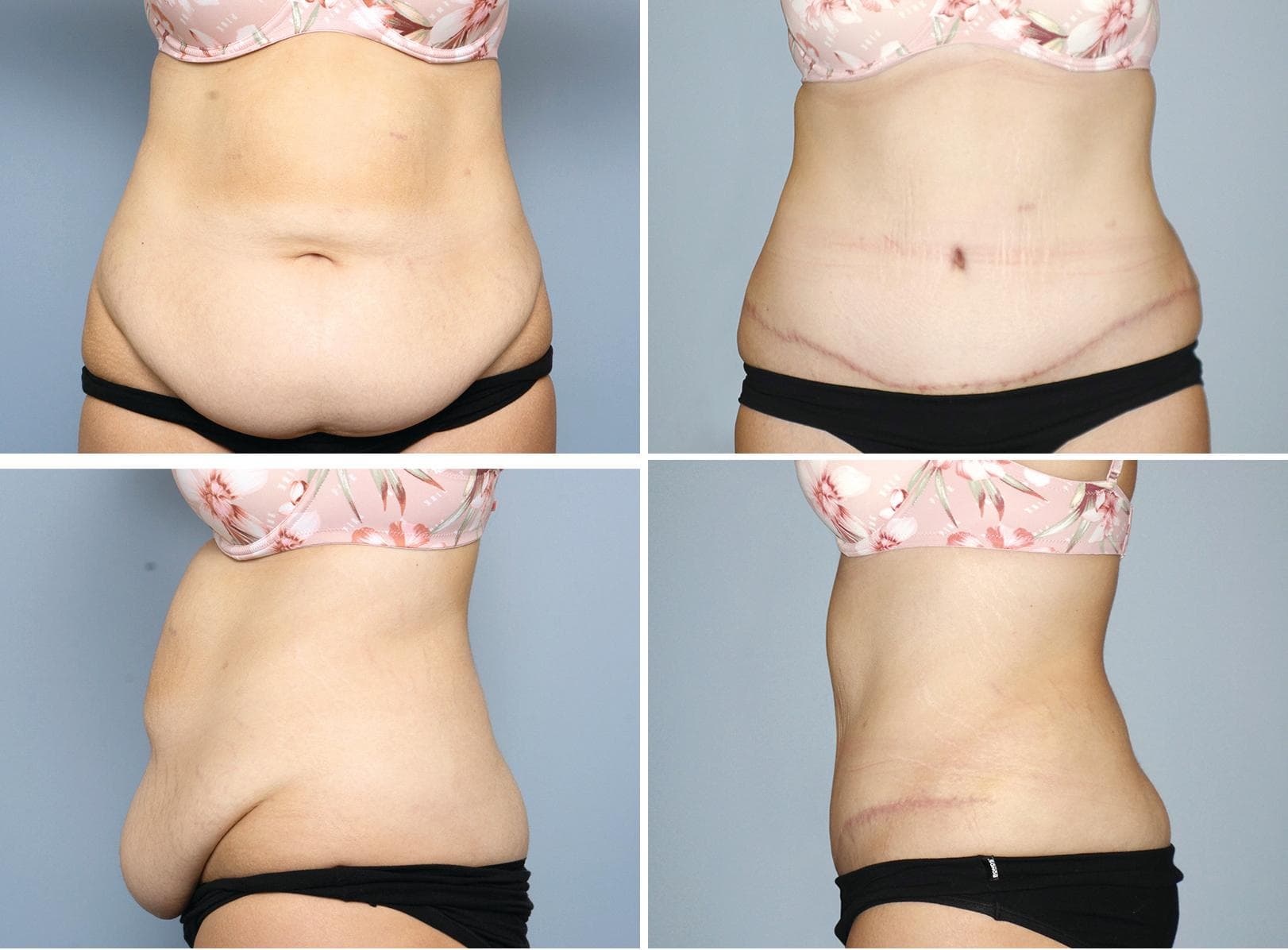
12 months post surgery
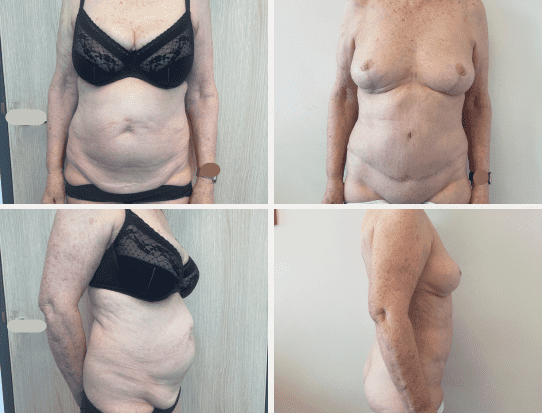
4 months post surgery
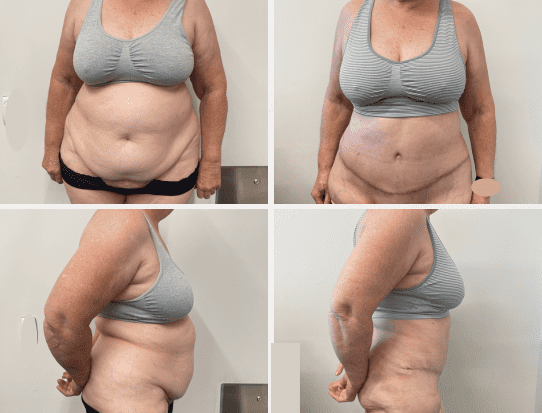
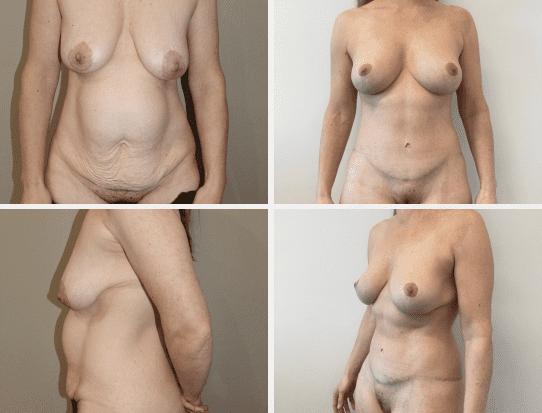

9mths post surgery

12 months post surgery
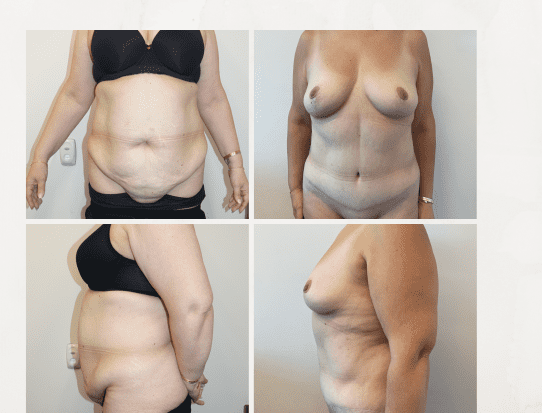
Q. Why do I need a GP referral before I book with Dr Wyten?
A GP referral is important for validation purposes, ensuring that you are in good physical and mental health before undergoing any plastic surgery, including the abdominoplasty procedure. It also helps confirm that you have no underlying medical conditions that may complicate your surgery or recovery. Your GP will assess your health to confirm you’re a suitable candidate for surgery.
Q. What is Dr Wyten's consultation process?
At your initial consultation, which will follow a referral from your GP or specialist, Dr Wyten will discuss your medical history, surgical technique options, and expected outcomes. She works closely with other specialists to ensure comprehensive care and create a personalised treatment plan tailored to your individual needs.
From the first consultation to the final follow-up appointment, Dr Wyten and her team prioritise patient-centred care, providing all the information needed to make informed decisions about your health and recovery.
You can read about Dr Wyten’s full consultation process here.
Q. What is the consultation fee to see Dr Wyten?
The consultation fee for seeing Dr Rebecca Wyten, an experienced abdominoplasty surgeon, is $355 at the time of publishing this. This fee is essential to cover the time spent discussing your abdominoplasty procedure, evaluating your medical history, and determining if you are a suitable candidate for the surgery.To book an Abdominoplasty Consultation or if you have further questions, please fill out the contact form below or email us at [email protected].
Q. Why does Dr Wyten only work with women?
As a mother, woman, and surgeon, Dr Rebecca Wyten focuses exclusively on female patients to provide a specialised and tailored approach to abdominoplasty, breast surgery, and other procedures that address concerns often unique to women, such as diastasis recti or excess fat or excess skin after pregnancy.
Q. Will private health or Medicare cover any fees?
Under Australian law, private health insurance may cover certain hospital fees related to an abdominoplasty procedure if it is deemed medically necessary, such as in cases of poor wound healing or severe diastasis recti.
Medicare typically does not cover cosmetic procedures, such as a traditional abdominoplasty, unless specific criteria are met, such as significant weight loss or health issues caused by excess skin. You will also need to check whether hospital stays, surgeon’s fees, and other costs are included in your health plan.
Q. Is there any difference between a cosmetic surgeon and a plastic surgeon in Australia?
Yes, in Australia, a plastic surgeon is a specialist who has completed extensive training and holds a FRACS qualification. A cosmetic surgeon, however, may not have the same level of surgical training and certification, as the title “cosmetic surgeon” is not officially regulated. Always verify qualifications before undergoing surgery, and get a second opinion if you have any doubts.
Q. What is a FRACS surgeon?
A FRACS (Fellow of the Royal Australasian College of Surgeons) surgeon is a highly qualified and certified specialist in their field, such as Dr Wyten, who is trained extensively in procedures like abdominoplasty and breast reduction. This certification ensures that your surgeon has undergone rigorous training and adheres to high professional standards.
Q. What is diastasis recti?
Diastasis recti is the separation of the underlying muscles in the abdominal wall, often occurring after pregnancy or massive weight loss. This condition weakens the abdominal structure, leading to a bulging appearance. A full abdominoplasty can address this issue by tightening these muscles and removing excess tissue or skin.
Q. Can abdominoplasty help with stretch marks?
Yes, for some patients, abdominoplasty can remove areas of skin with stretch marks if they are located on the excess skin that is removed during the procedure. Stretch marks outside of these areas will remain.
Q. Will I need drainage tubes after surgery?
In some cases, drainage tubes may be placed to help manage fluid accumulation. During the consultation, Dr Wyten will explain whether this applies to your surgery.
Q. How long is the recovery time?
The recovery process varies depending on the extent of your surgery and your individual health. Generally, patients take about 2-3 weeks off work. Supportive garments are worn for 3 months, and strenuous exercise should be avoided for at least 6-8 weeks.
Q. What is a mini abdominoplasty?
A mini abdominoplasty is still a major surgery but not as intensive as a full abdominoplasty. It addresses excess skin and fat below the belly button and involves less extensive muscle repair. This option may be suited for those with less significant loose skin. Dr Wyten doe not offer this procedure.
Q. Are there different types of abdominal surgery?
Yes, there are different types of surgery designed for various abdominal areas to address specific concerns. Abdominoplasty is a general term for abdominal surgery, which addresses excess fat and abdominal fat. Each surgery may involve different techniques, depending on the patient’s needs. Techniques or types of surgery will also depend on your health practitioner’s training and experience.
These include:
Q. What is a fat transfer?
A fat transfer involves removing excess fat from one part of the body, such as the abdomen or thighs, and reinjecting it into another area to increase volume. This procedure is often used in combination with abdominoplasty or breast mastopexy surgeries to achieve more desired results.
Q. What sort of fatty tissue is removed in an abdominoplasty?
In an abdominoplasty, the type of fatty tissue that is typically removed includes:
Q. What is revision surgery?
Revision surgery is a procedure performed to alter or modify the results of a previous surgery. This may involve addressing complications, such as poor wound healing or aesthetic concerns, like asymmetry or dissatisfaction with the initial outcome.
In the context of abdominoplasty, revision surgery may be necessary to refine results or manage excess tissue after weight loss.
Q. How can I best support the healing process after surgery?
To support your healing process after abdominoplasty surgery, consider the following steps:
Q. What are the scars like after abdominoplasty surgery?
It is important to follow the post-operative instructions you’re given after surgery to optimise the appearance of your scars. With abdominoplasty surgery performed by Dr Wyten, you will commonly have a scar around the lower abdomen from hip to hip.
As a part of this surgery, the umbilicus (belly button) needs to be repositioned and will also have a scar. In some cases where it is necessary to improve shape, you may also have a vertical scar (Fleur-de-Lis procedure). Scar management will be discussed with you prior to surgery by Dr Wyten. Scars typically take up to 1 -2 years to completely mature.